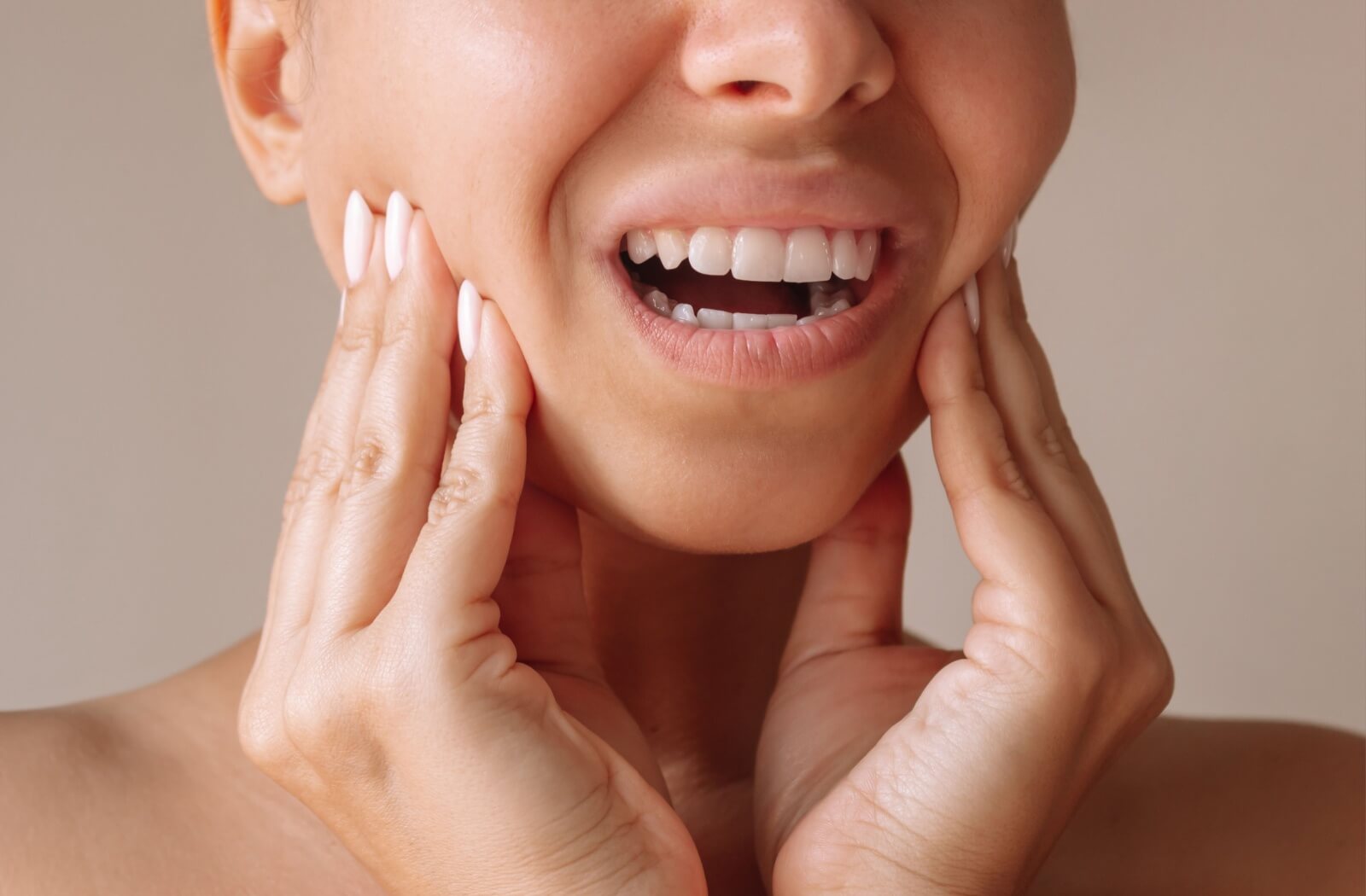We use our jaws every day to eat, speak, chew, yawn, and express ourselves. The jaw is a complex structure, and some people experience problems, such as a clicking noise or pain, when they move their jaws.
A clicking noise when you use your jaw can have many causes, including bruxism (teeth grinding) and malocclusion (bite misalignment), but a common cause that we’ll focus on in this post is temporomandibular joint (TMJ) disorder.
TMJ disorder (also known as TMD) and other conditions that cause jaw clicking can be frustrating, but there are ways to manage them. These can range from prescription medication and self-care to physiotherapy and surgical intervention, though surgery is uncommon. If you have TMD, an orthodontist can help.
Reasons for Jaw Clicking
Some people experience a “popping” or “clicking” sound when they open or close their jaws. This can range from a minor irritation to a severe symptom, and can happen on one or both sides of the face. Common reasons for jaw clicking include:
- Grinding or clenching your teeth, a condition known as bruxism
- A misaligned bite, otherwise known as malocclusion
- Arthritis, a condition that affects joints
- Tense muscles caused by stress and anxiety
- Injury, such as a blow to the jaw
- Structural abnormalities in the joint
- Gum-chewing and fingernail-biting
- A family history of temporomandibular disorder
What is Temporomandibular Joint (TMJ) Disorder?
Temporomandibular joint disorder, or TMD, is a common cause of jaw clicking. If you have TMD, your jaw clicking symptoms may be accompanied by pain, headaches, earaches, and neck pain.
The Temporomandibular Joint (TMJ)
Your temporomandibular joint (TMJ) is one of your body’s most complex joints. It connects your jawbone (mandible) to your skull and, along with other tissues, helps you eat, speak, chew, yawn, and swallow. “TMJ” refers to the temporomandibular joint itself, while “TMD” refers to a disorder of the joint.
Causes & Symptoms of TMD
Multiple factors often contribute to the development of temporomandibular joint disorder, including arthritis, injury, poorly fitted dentures, and habits such as biting your fingernails. Clenching or grinding your teeth, stress, and having tension in your neck muscles can often make TMD worse.
Symptoms of TMD include:
- Pain when yawning or chewing
- Popping and clicking sounds when opening and closing the jaw
- Difficulty opening the jaw wide
- Headaches, muscle aches, and pain in the area around the ear
- Sometimes, ringing or pressure in the ears can develop
Preventing TMD
There are things you can do to prevent the development of TMD. You can:
- Be more proactive about managing stress and anxiety
- Build awareness of when you clench your teeth
- Avoid overworking your jaw muscles, such as avoiding excessive gum-chewing or fingernail-biting
- Practice healthy posture
- Chew with both sides of your mouth and avoid very hard or sticky foods

Treatment Options for TMJ Disorder
Temporomandibular joint disorder often doesn’t require treatment. However, if you do have jaw discomfort, it’s worth consulting with a healthcare provider. Your jaw plays a vital role in everyday life, so professional advice on how to achieve comfort can go a long way.
Medications
Medications can bring pain relief. These include acetaminophen and nonsteroidal anti-inflammatory drugs (NSAIDs) like ibuprofen. Other options include muscle relaxers to help prevent teeth grinding. Antidepressants may also be prescribed.
Splints
Using a dental splint is the most common treatment for TMD. Also called occlusal splints, these devices are made of plastic or acrylic and are custom-fitted to an individual’s upper and lower teeth. They cover the surface of teeth, prevent teeth grinding, and promote the easing of muscle tension. Typically, occlusal splints are worn overnight to prevent teeth grinding during sleep.
Physiotherapy
Physiotherapy is a treatment intended to improve the body’s mobility and function. You may be referred to a physiotherapist to manage TMD, as this treatment can help relax and stretch the jaw muscles.
Surgery
Surgery is rarely needed for TMD, but serious abnormalities in the jaw may require surgical intervention. Jaw surgery, known as orthognathic surgery, is a major procedure performed at a hospital by an oral and maxillofacial surgeon.
Self-Care Tips
If you’re struggling with TMD symptoms, there are also ways to manage them at home. These include:
- Eating soft foods or cutting foods into smaller pieces to chew
- Holding a hot or cold compress against your jaw several times a day, 15 minutes at a time
- Taking steps to manage stress and anxiety
- Practicing good posture: avoid slumping your shoulders
Help With Managing Jaw Pain
If you’re struggling with temporomandibular joint disorder, you’re not alone. In fact, TMDs affect 25-30% of the population. TMD can be a mild irritation, or it can be a seriously uncomfortable condition. You deserve relief from your symptoms, so consider consulting with a healthcare provider if you have symptoms of TMD.
An orthodontist can help. For example, at Orthodontic Smile Studio, we can provide professional guidance on whether orthognathic surgery is necessary in your case. To learn more about our orthodontic services or to get insight into your jaw symptoms, contact us today.



